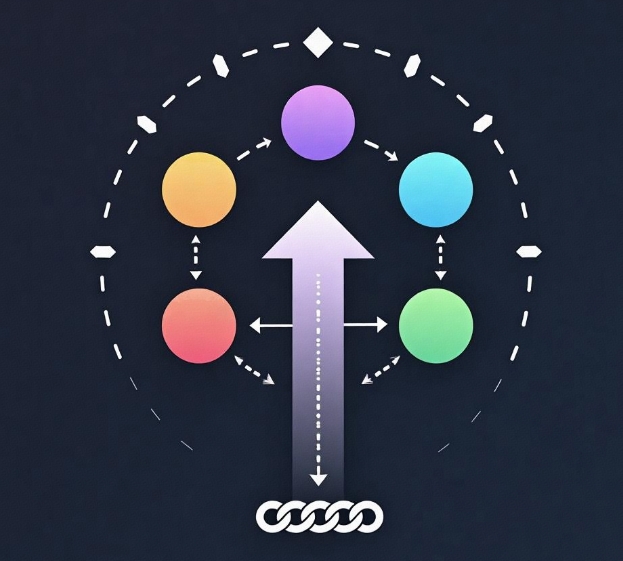Transaction Verification and Speed Optimization in Blockchain Development
- latest articles
- 1.DApp Development & Customization: Merging Diverse Market Needs with User Experience 2.Analysis of the Core Technical System in DApp Project Development 3.How to achieve cross-chain interoperability in Web3 projects? 4.How does the tokenization of points reconstruct the e-commerce ecosystem? 5.How to Set and Track Data Metrics for a Points Mall? 6.What is DApp Development? Core Concepts and Technical Analysis 7.Inventory of commonly used Web3 development tools and usage tips 8.Development of a Distribution System Integrated with Social E-commerce 9.Six Key Steps for Businesses to Build a Points Mall System 10.What is DApp Development? A Comprehensive Guide from Concept to Implementation
- Popular Articles
- 1.Future Trends and Technology Predictions for APP Development in 2025 2.Analysis of the DeFi Ecosystem: How Developers Can Participate in Decentralized Finance Innovation 3.From Zero to One: How PI Mall Revolutionizes the Traditional E-commerce Model 4.DAPP Development | Best Practices for Professional Customization and Rapid Launch 5.Recommended by the Web3 developer community: the most noteworthy forums and resources 6.From Cloud Computing to Computing Power Leasing: Building a Flexible and Scalable Computing Resource Platform 7.How to Develop a Successful Douyin Mini Program: Technical Architecture and Best Practices 8.Shared Bike System APP: The Convenient Choice in the Era of Smart Travel 9.How to Create a Successful Dating App: From Needs Analysis to User Experience Design 10.From Design to Development: The Complete Process of Bringing an APP Idea to Life
With the increasing popularity of blockchain technology, its applications in various fields are gradually expanding, especially in finance, supply chain management, and digital identity authentication. As a decentralized distributed ledger technology, blockchain features trustlessness, immutability, and strong transparency, making it excellent in ensuring transaction security and data reliability. However, in the practical application of blockchain, transaction verification and speed optimization remain two core issues that directly affect the system's efficiency and user experience.
This article will delve into the issues of transaction verification and speed optimization in blockchain development, analyze the challenges faced, and introduce some current solutions and optimization techniques to help developers better understand how to enhance system performance while ensuring transaction security.
1. Overview of Blockchain Transaction Verification
1.1 Basic Principles of Transaction Verification
In blockchain, the main task of transaction verification is to ensure the legality and validity of each transaction. Blockchain uses consensus mechanisms to ensure transaction accuracy and reaches agreement among nodes in the network to confirm transaction validity. Each transaction must be verified before it can be packaged into a block and become part of the blockchain.
Transaction verification typically includes the following steps:
Transaction Signature Verification: Each blockchain transaction is signed by the initiator using a private key to verify its authenticity and authorization. When nodes receive a transaction, they first verify whether the signature matches the sender's public key.
Balance Check: Verify whether the sender's account has sufficient balance for the transaction. This is to prevent double-spending attacks.
Transaction Format Check: Transactions must conform to the format specified by the blockchain network. If the transaction data does not meet the specifications, it will be rejected.
Transaction Deduplication: Avoid the same transaction being submitted multiple times, which could cause network congestion and resource waste.
1.2 Consensus Mechanisms and Transaction Verification
Consensus mechanisms are the core mechanisms in blockchain networks that determine transaction validity and block generation rules. Different blockchain systems use different consensus mechanisms, with common ones including:
Proof of Work (PoW): Verifies transactions and selects the next block creator by solving complex mathematical problems. Bitcoin is a typical representative using PoW.
Proof of Stake (PoS): Selects block creators based on the amount and duration of tokens held by nodes, linking participants' economic interests to the number of tokens their nodes hold.
Delegated Proof of Stake (DPoS): Elects representatives to produce blocks, who are responsible for verifying transactions and generating blocks.
Practical Byzantine Fault Tolerance (PBFT): A solution to the Byzantine Generals Problem that can improve the speed and efficiency of transaction verification.
Different consensus mechanisms directly impact the efficiency and security of transaction verification, and developers need to choose the appropriate consensus mechanism based on specific application scenarios.
2. Challenges in Transaction Verification
2.1 Performance Bottlenecks
Transaction verification is a complex process involving a large amount of data processing and computation. As the scale of blockchain networks expands, the number of transactions increases dramatically, and the processing capacity of individual nodes may not meet the high-concurrency transaction verification demands. Especially in public chains, the decentralized nature requires all nodes to participate in the transaction verification process, leading to performance bottlenecks.
For example, the Bitcoin network has limitations in transaction verification speed, processing only about 3 to 7 transactions per second (TPS). Although other public chains like Ethereum have improved in TPS, they still cannot meet the demands of high-frequency trading and large-scale applications.
2.2 Network Latency
The decentralized network structure of blockchain leads to inevitable network latency during transaction verification. Each transaction needs to propagate among multiple nodes, a process affected by factors such as network bandwidth and node distribution, which can prolong transaction confirmation times.
In high-concurrency scenarios, delays in transaction confirmation not only affect user experience but may also cause transactions to be considered invalid if not confirmed in time, thereby impacting system stability and security.
2.3 Double-Spending Attacks
Double-spending attacks are a major issue in blockchain transactions, especially in the early stages of transaction verification. If the transaction verification process does not adequately ensure the uniqueness and legality of transactions, malicious users can forge transactions or submit the same transaction in different networks to achieve repeated spending.
Although blockchain uses a decentralized network structure to prevent double-spending, in high-concurrency and low-latency environments, double-spending attacks remain a concern that requires special attention.
3. Strategies for Blockchain Speed Optimization
To improve the transaction processing speed and efficiency of blockchain, developers have adopted various optimization strategies. Below are some key optimization techniques.
3.1 Increasing Block Size
In traditional blockchain networks, each block has a size limit. For example, Bitcoin's block size is limited to 1MB, meaning the number of transactions each block can handle is limited. By increasing the block size, the throughput of the blockchain system can be enhanced, thereby improving transaction verification speed.
However, increasing block size may also bring issues such as increased network bandwidth pressure and higher node storage requirements. Therefore, the negative impacts must be weighed when increasing block size.
3.2 Layered Architecture Design
Layered architecture is a design approach that improves system performance by dividing the network into layers. Blockchain can be divided into multiple layers, including the base layer (such as the consensus layer) and the application layer (such as smart contracts and decentralized applications). By distributing tasks like transaction verification and smart contract execution across different layers, blockchain processing speed can be effectively enhanced.
For example, Ethereum 2.0 introduces sharding technology, distributing blockchain processing tasks across multiple nodes to achieve parallel processing, significantly improving transaction verification efficiency.
3.3 Using Layer 2 Solutions
Layer 2 refers to second-layer solutions built on top of the main blockchain, aiming to improve transaction speed and reduce fees by alleviating the burden on the main chain. Common Layer 2 technologies include:
Lightning Network: Primarily used in Bitcoin, it enables fast transactions by establishing payment channels.
Plasma: A Layer 2 scaling solution for Ethereum that can increase throughput and transaction speed through child chains.
Optimistic Rollups and zk-Rollups: Process transaction data and computational tasks in Layer 2, reducing the burden on the main chain and thereby improving overall network throughput and efficiency.
3.4 Consensus Mechanism Optimization
As mentioned earlier, different consensus mechanisms directly affect the speed of blockchain transaction verification. To optimize speed, developers can adopt more efficient consensus mechanisms. For example, Proof of Stake (PoS) and Delegated Proof of Stake (DPoS) offer higher efficiency in transaction verification compared to Proof of Work (PoW). By reducing computational tasks in the network and improving the efficiency of the consensus process, transaction verification speed can be significantly enhanced.
3.5 Transaction Batch Processing
To increase transaction throughput, blockchain networks can adopt transaction batch processing, combining multiple transactions into a single transaction for processing. This not only improves transaction verification efficiency but also reduces confirmation times and transaction fees.
4. Conclusion
Although blockchain technology faces certain challenges in transaction verification and speed optimization, with continuous technological development, more innovative solutions have emerged. Through improvements in consensus mechanisms, the design of layered architectures, and the application of Layer 2 solutions, transaction verification speed in blockchain has seen significant enhancements.
In the future, as blockchain technology continues to advance, transaction verification and speed optimization will be key to improving blockchain system performance. When designing and developing blockchain applications, developers should comprehensively consider various optimization solutions to provide users with faster, more secure, and more reliable transaction experiences.
-

How to achieve cross-chain interoperability in Web3 projects?
With the continuous development of WEB3 technology, Web3 has gradually become an···
-

Inventory of commonly used Web3 development tools and usage tips
With the continuous development of blockchain technology, Web3 has become a hot ···
-

Web3 development trend prediction: analysis of future technology directions and application scenarios
With the gradual development of blockchain technology, the concept of Web3 has m···

 Blockchain
Blockchain












